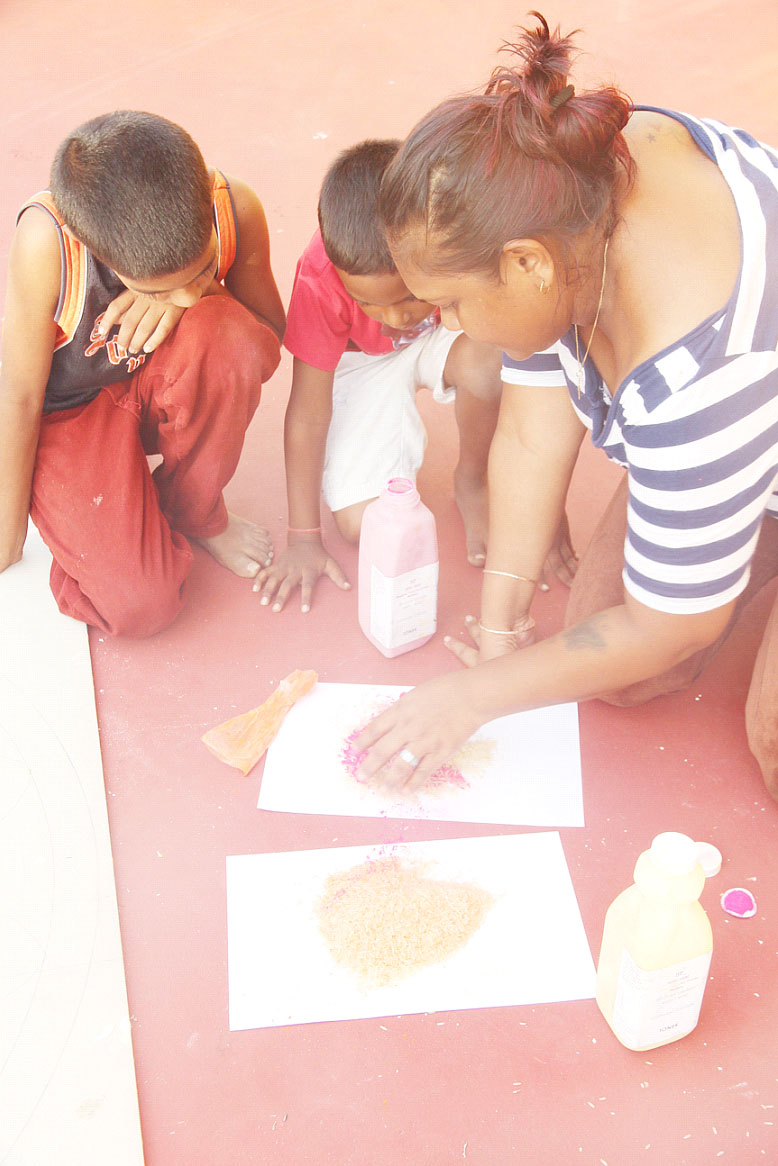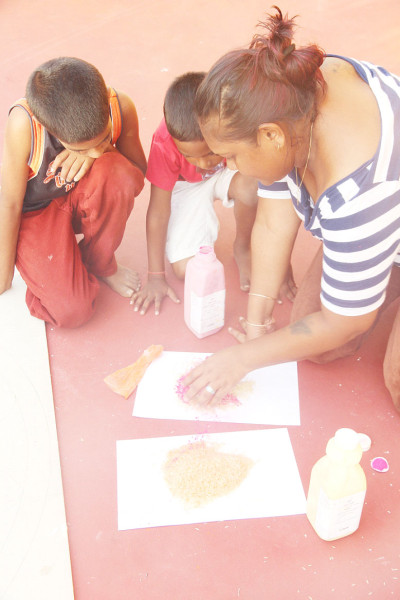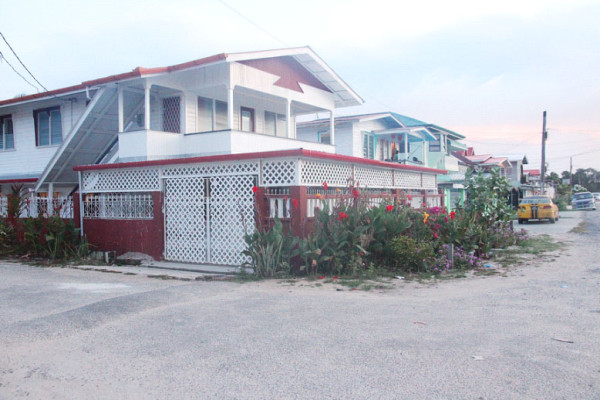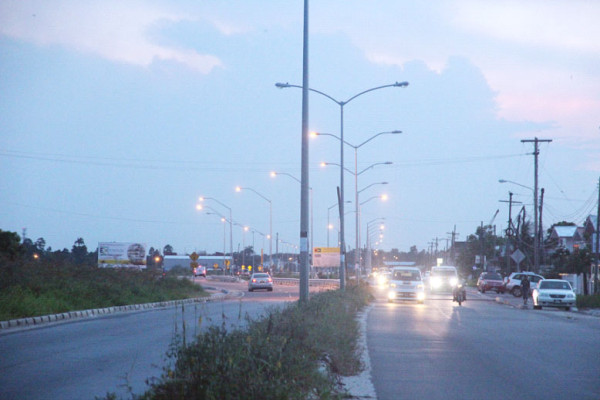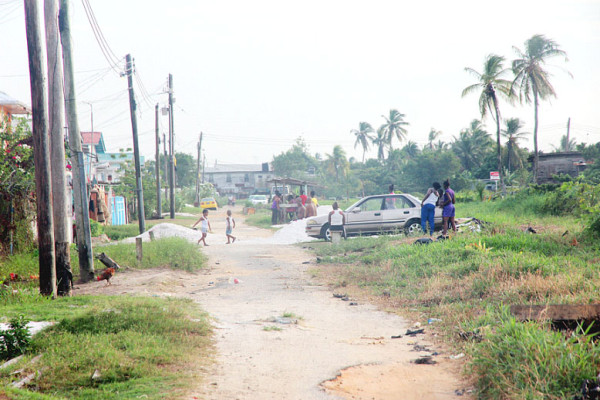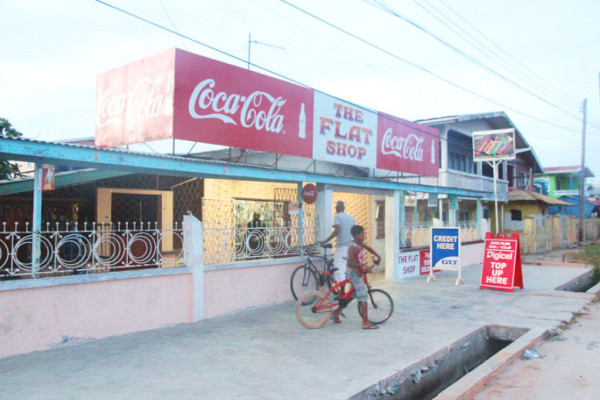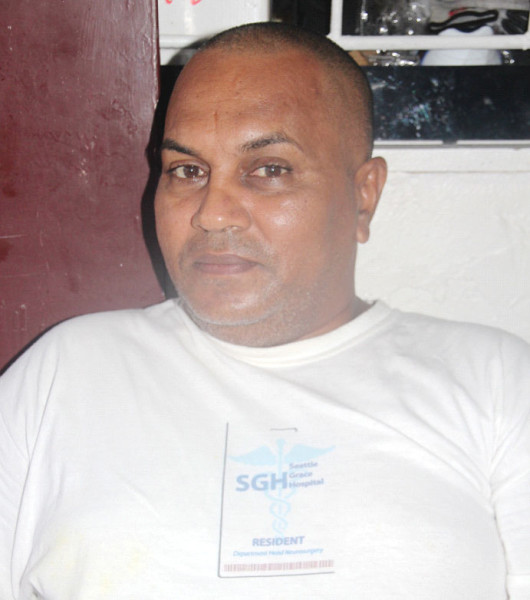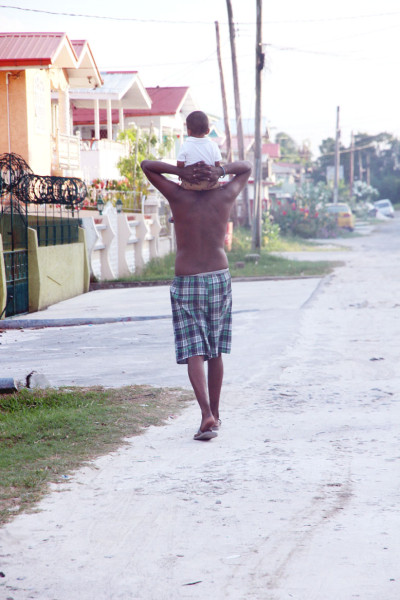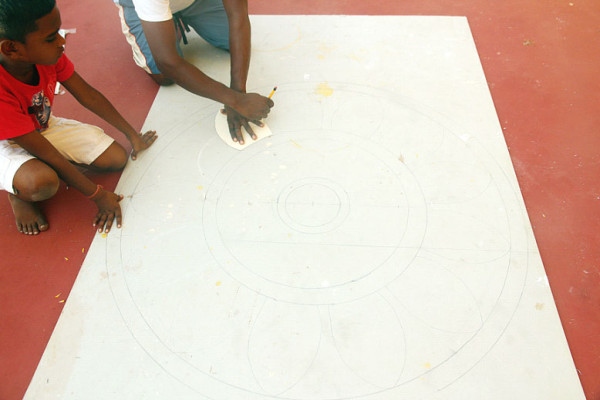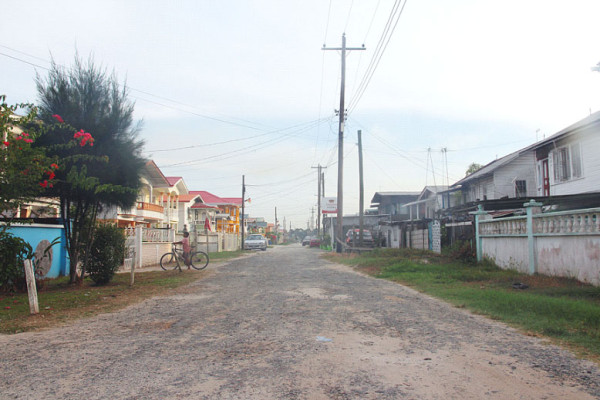Covent Garden on the East Bank Demerara is a laid back community with an average population of 300. A far cry from its British namesake with its well-known fruit and vegetable market, the local village has small gardens in the various yards where residents grow flowering and non-flowering plants and a few vegetables here and there.
When the World Beyond Georgetown visited, some villagers were preoccupied with preparing for the Diwali celebrations. Some were cooking and the aroma of the traditional seven curries permeated the air, others were preparing sweetmeats, making Rangolis or just relaxing; children played in the not-so-busy streets. Some neighbours had gathered for a chit chat and looked on as preparations were being made.
For over 50 years, the village has been home to families such as the Dicksons, the Sakoors, the Davises, the Nichols and the Rupnaraines.
According to a Rupnaraine grandson, Paul Daneshwar, his family has been living in the village for over 60 years. Dhaneshwar known as Antonio, a Success Elementary School teacher, was born in Covent Garden. We found him in a yard filled with flowers enjoying a chat with relatives while children played a game of cricket nearby.
“Life here is very quiet. It’s a very friendly neighbourhood,” he said. Many of the villagers he grew up knowing have migrated, he said. “The occupation here varies; we have drivers, shopkeepers, teachers, carpenters and persons working at the private firms.”
The majority of Covent Gardeners are Christians, with Hindus and Muslims. There are a two Christian churches in Covent Garden. However, Hindus and Muslims attend places of worship a village or two away.
Antonio attends a church situated in Farm, just outside Covent Garden. Although Christian, his family, as a tradition on holidays, prepares meals coinciding with the holidays. It was Diwali so they made seven curry and sweetmeats as well.
For Antonio the best part about growing up in Covent Garden was playing cricket on the road with friends after school or playing marbles in the backyard. It is believed, he said, that the village has existed since the mid-1900s. He boasts of how cooperative the villagers are, at least the persons in his street. However they prefer to keep to themselves and are best described as modest.
Antonio said that while the village enjoys electricity, water, internet and street lights at the fingertip, what he would like is better water. What they receive at present, he says, comes with a lot of rust. “The village houses nursery, primary and secondary schools,” he said, wishing they could have at least a recreational facility. “We don’t have a recreational facility. I find that child labour is prevalent here, as early as the early teens. I would like to see activities or skills [of some sort] being put into place for children like these. I’d like to see our youths put their time to better use,” he adds. The quiet and sober atmosphere is what keeps him here.
Further down Antonio’s street lives Elaine Samuels, well known as Auntie Elaine.
Seventy-seven-year-old Samuels moved to Covent Garden in 1958 when she was just around 20 or so. She and her family—her father, mother and eight siblings—had lived at Farm on the sugar estate in a cottage. Her ather, she says, drove for the estate. Then in 1958 when the Covent Garden Scheme opened, they moved there to live. She can’t recall anyone else living in the community at that time; at least not in her street, she says. “There was bush everywhere and when we began to build, everyone else was building also. Everybody start to build at the same time,” Samuels said. Those days saw many of the Covent Gardeners travelling to Herstelling to buy groceries. Back then too, only some of the streets had pipes so accessing potable water meant a lot of fetching. Samuels said she was fortunate as the pipe was situated right outside of her yard on the road. During the May/June season it would flood, she said, and often she’d be seen in a pair of long boots. “Sometimes”, she said, “it takes up to four days before the water runs off.”
Samuels, like most villagers buys groceries from the shops in the area, although some persons prefer the drive to the supermarkets in Georgetown. Every other Sunday, Samuels travels to Agricola where she fellowships with the other members of the Rome Methodist Church and once a month she visits Providence to collect her pension. When asked if this isn’t a hassle sometimes, she replied, “That’s life. You can’t complain.”
Contented with life in Covent Garden, she says she lives in comfort and has nothing more than what she wants. She enjoys watching news and death announcements so as to keep abreast with everything that goes on around her. “I love to live here,” she says, “I custom to here. The environment and everybody good. Everybody living good here. Nobody ain’t got a problem with a soul.”
A few streets away is boutique owner Tirbhawan David, who moved to Covent Garden after marrying the girl of his dreams. He migrated from Cumberland, Berbice six years ago. He calls Covent Garden, “a garden of flowers.” When he first arrived, David said, he found it strange and different from his home in Berbice. Although friendly, he said, the villagers keep to themselves. They most times manage a “hi or hello”.
Covent Gardeners enjoy playing their music now and again he said but at very moderate levels. When Covent Gardeners aren’t enjoying a bit of music, they enjoy family time and also entertaining relatives and other guests. David has adjusted and says the way of life has become a part of his routine also. He enjoys the quiet atmosphere many times from his hammock.
On Saturdays he’s at the Parika Market selling clothes and at the Leonora Market on Sundays.
David says he enjoys living in Covent Garden, a place he has also come to call, “home.” He just wishes that the few potholes in the road can be fixed.
